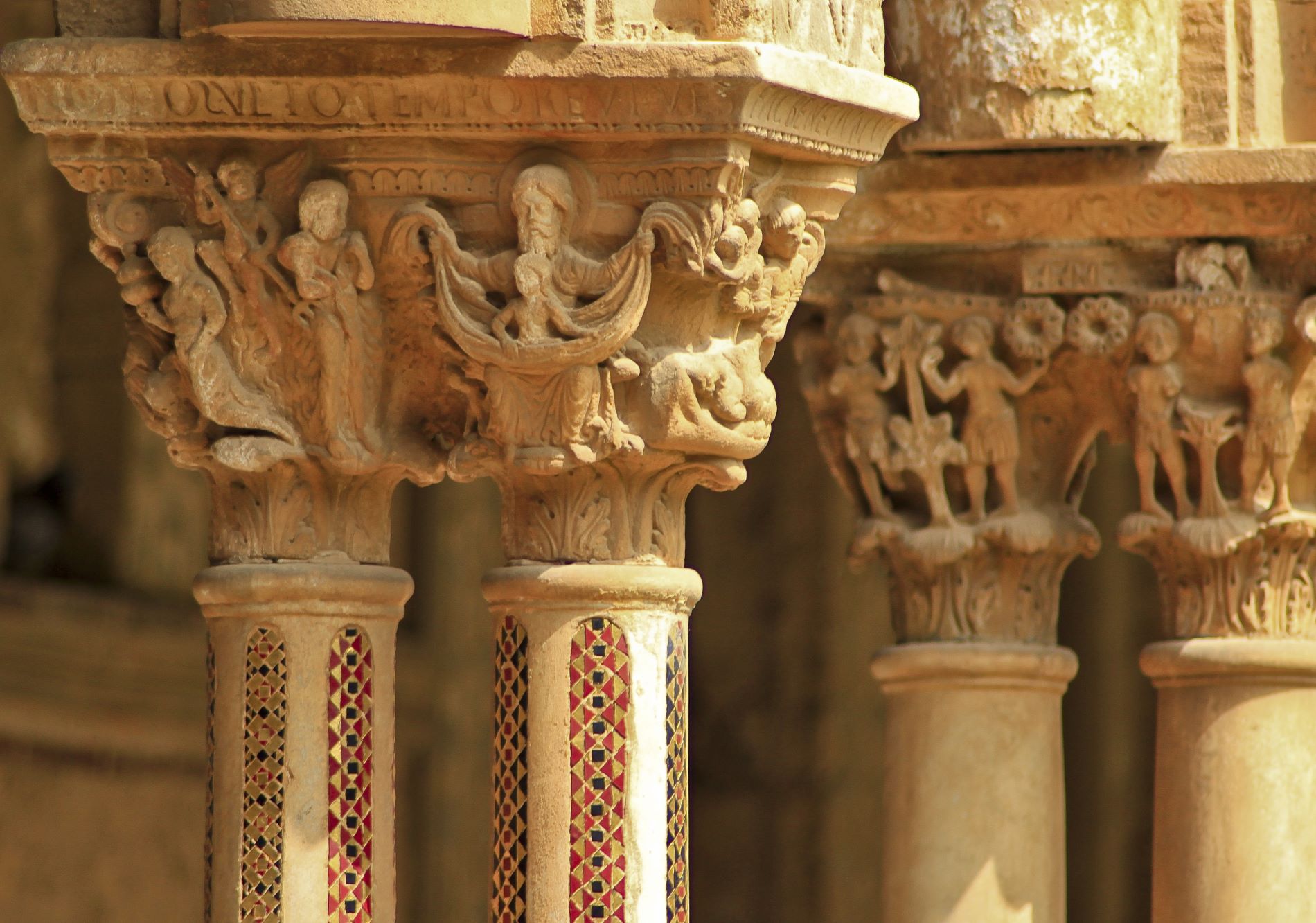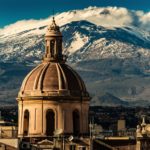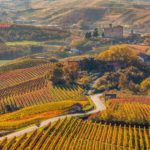The best of Western Sicily
Our journey to discover Sicily, the largest Italian island, continues.
After describing the eastern part of the island (if you didn’t read the previous blog click here) today we cover the Western with its provinces of Palermo, Trapani and Agrigento.
How to reach Western Sicily:
The “Falcone-Borsellino” airport of Palermo is an excellent landing place to visit Western Sicily. It is only 25 miles from the city and can be reached in about 40 minutes by car. But be careful, the traffic in Palermo is very intense so don’t underestimate it!
Palermo, the Capital
Capital of the Norman Kingdom of Sicily until 1816 , today the fifth largest city in Italy offers its visitors ancient alleys reach with the history of the many cultures that forged its historical city-center.
From local markets to sumptuous noble palaces, Palermo is a mix of elegance and cultures that make it unique. This city, overlooking the Tyrrhenian Sea, offers enchanting beaches like Mondello beach, the most beautiful and frequented of the area.
What is the best way to start visiting Palermo? Definitely strolling through the local markets with a specialized tourist guide.
These markets of Arab origin are a veritable riot of colors, flavors, scents and sounds.
A set of emotions that extends to the historic center, with stalls and shops (Putìe) that showcase all the merchandise: fruit and vegetables, meat, fish so fresh that it’s still alive.
And still a lot of street food, ranging from sandwiches with “panelle” (chickpea fritters), boiled panicles, boiled potatoes, octopus, prickly pears and more! And if you want a real Sicilian experience, jump on “motoape Calessino”, a typical motor tricycle widely used in Sicily, and enjoy the ride!
What are the must-see attractions in Palermo?
It’s not easy to make a selection among the many beautiful sights that this city offers, but if you have only a little time to spend in Palermo, here are the five things you can’t miss:
The Cathedral
Its imposing structure is a collection of different styles and architectures that testify to the history of this building. Built around 1185 and dedicated to the Holy Virgin Mary of the Assumption, from 2015 it is part of the Unesco heritage relative to the Arab-Norman itinerary of Palermo, which also includes Cefalù and Monreale.
Palazzo dei Normanni
It was a sumptuous Royal Palace, rich in frescoes and mosaics. The Palatine Chapel, originally the church of the royal family, stands out among the various “apartments”. Completely decorated with Byzantine mosaics and wooden sculptures, it is without doubt one of the most beautiful places in all of Sicily.
Teatro Massimo
It is the largest opera house in Italy and the third in Europe after Paris and Vienna. The exterior is reminiscent of a Greek temple and the interior is beautifully decorated. If you are an opera lover, check the availability of seats well in advance. Theater tours are limited and often subject to the show schedule.
Chiesa del Gesu’
Probably the most important Baroque church in Palermo. Better known as “Casa Professa” it is an impressive baroque blaze. The interiors are an uninterrupted succession of decorations, with opulent stuccos, frescoes and marble ornaments. In 1892 the church was declared a National Monument.
Piazza Pretoria & Quattro Canti
Better known as “Piazza della Vergogna” because of the fountain adorned with naked statues right in front of the monastery of the Sisters of Santa Caterina. A few steps from the square, you arrive at the intersection between Via Maqueda and Via Vittorio Emanuele to admire the famous “Quattro Canti“, a square whose four corners are decorated with three orders of baroque statues that from bottom to top represent respectively the four seasons, King Charles V of Spain with his three viceroys and the four patron saints of the city (before Santa Rosalia).
Before leaving, don’t forget to taste the street food that Palermo offers to its inhabitants and visitors: panelle, arancini, croquettes are just some of the foods you can enjoy walking around Palermo!
AROUND PALERMO
Monreale
7 km from Palermo, stands the Norman town of Monreale. Every corner speaks of history, art and culture, but what makes it famous in the world is the majestic Cathedral, dedicated to Santa Maria la Nova, a masterpiece of Arab-Norman art, built by king William II of Altavilla, called “The Good”, between 1172 and 1176.
What will leave you breathless are the 6400 square meters of Byzantine mosaics that decorate the interior of the church. A masterpiece of Byzantine art that is worth a visit. All this wealth of decorations was aimed at showing the prosperous period that the Kingdom of Sicily lived under its King.
Cefalu
Located at the foot of a rocky promontory, in the province of Palermo, stands one of the most beautiful villages in Italy: Cefalù. Over the centuries this small town was dominated by the Greeks, Syracusans, Romans, Byzantines, Arabs and Normans, but traces of a pre-Hellenic settlement are the megalithic walls that surround the current historic center.
The main attraction is the Cathedral. Together with the Capella Palatina and the Cathedral of Monreale, it was declared a UNESCO World Heritage Site. But in Cefalu you also go for the crystal clear sea and the relaxed atmosphere that the village offers.
Trapani
Moving westward from Palermo, you reach another province of Western Sicily: Trapani. On the way to Trapani, a mandatory stop is the Segesta Archaeological Park. The first thing we encounter is the temple on the plateau between the two peaks of the mountain where, anciently, there was a city of the 5th-4th century BC . Around this city today we can visit the Temple, the Theater and the Sanctuary of the Mango district.
For lovers of the sea, nature and trekking, we recommend another stop before arriving in Trapani: the Zingaro Nature Reserve. The main attraction inside this wonderful natural reserve is the ancient tuna factory of Scopello.
Trapani is a small town that rises on the western tip of Sicily. The baroque style is the predominant one. The historic center is near the port where hydrofoils leave daily to the Egadi Islands, an archipelago of three islands: Favignana, Levanzo and Marettimo. The economy of this city is mainly based on fishing and salt production. The saltpans of Trappani are one of the attractions of this city and are worth a visit.
Erice
It is located in a great position from where you can admire the most beautiful views of the city of Trapani from above. In Sicily it is one of the most popular destinations for tourists, and in 2014 it was awarded the red flag of the most beautiful villages in Italy. Walking through the narrow streets of Erice will take you back in time and give you the feeling of living in the middle age.
Once upon a time the Temple of Venus, goddess worshiped by the Romans, stood on the summit. Today, instead of the temple, stands the Castello di Venere from the Norman era. The small cathedral is worth a visit. The stuccos inside and the columns look like curls of whipped cream.
Marsala and its wineries
The area around Trapani is also famous for wine. I’m sure everyone knows Marsala wine. Well, this wine is produced right in the small town of Marsala a few miles away from Trapani. One of the historic wineries to visit is undoubtedly the Donnafugata winery. Built in 1851, it retains the typical layout of a Mediterranean “baglio” (a typical Sicilian and Spanish countryside architecture), enclosing a spacious courtyard dotted with citrus and olive trees. Our customers love this winery and spend their lunch break there.
Mazzara del Vallo
From Marsala to Agrigento, along the southern coast of Sicily, you pass by a small town whose main activity is fishing: Mazzara del Vallo. The fishing community of this town leaves at night towards the African coasts, to return at dawn with a load of fish that on the same day, by plane, will arrive on the tables of restaurants in northern Italy. You could stop in Mazzara del Vallo for a quick lunch before reaching Agrigento. The local cuisine of this town has been heavily influenced by Arab and North African traditions. A typical local dish, in fact, is the fish couscous.
Agrigento
Last but not least, it is Agrigento. This city offers one of the most beautiful archaeological sites in Europe: the Valley of the Temples. It is one of the most extensive, representative and best preserved archaeological sites of classical Greek civilization, included in 1998 by UNESCO on the list of World Heritage Sites. All the temples of this valley (or what remains of them) are wonderful, but one in particular stands out among all: the Temple of Concord.
The temple of Concord has kept all its ancient charm intact: together with the Parthenon, it is considered the best preserved Doric temple in the world. In the eyes of the contemporary visitor the columns, the pediment, the tympanum present themselves with a beautiful ocher color. In reality, the temple was originally white, except for the upper part, painted blue and red.
The other temples in the valley have been ruined, damaged by time and looted to reuse the materials with which they were built. The temple of Concordia was saved because in the 6th century AD it was converted into a Christian church.
If you are a lover of classical Greek art, we suggest you pay a visit to the Pietro Griffo Regional Archaeological Museum in Agrigento.
And if you are a wine lover? From Agrigento there are two wineries that I strongly suggest to visit: “Planeta” in Sambuco di Sicilia and “Tenuta Regaleali of Tasca d’Almerita”.
We started with a passage taken from Goethe’s work and we would like to conclude with another passage of the same work (Italian Journey):
“Never in our whole life were we able to enjoy such a splendid vision of spring as this morning at the rising sun … The view extends over the great cliff of the ancient city, rich in gardens and vineyards … towards the southern end of this verdant and flowery plateau the Temple of Concord is seen rising, while to the east are the few ruins of the Temple of Juno”
Johann Wolfgang (von) Goethe.
Curiosity
Since Palermo and Catania are the two largest cities on the island, there has always been a certain rivalry between the two. But here I would immediately like to say that this rivalry belongs to the past and fortunately the new generations have overcome this cultural obstacle. Of course, some still quarrel if the original name of the famous Sicilian fried rice ball is “Arancino” (as called in Catania) or “Arancina” (as called in Palermo), but nothing serious! These two cities have their own beauty and soul and both know how to enchant their visitors. Trust in someone who, like me, has pure Sicilian blood!!
I hope that you enjoyed this insight into the Italian main Island and that you get inspired to learn more or see for yourself! If you enjoyed this blog post, share it with a friend and if you are interested in learning more about traveling to this area or any other region in Italy, please contact us for more information.
Stay tuned for more blogs about other regions in Italy and be sure to click the link below for an example of tours we offer in the Western Sicily.





